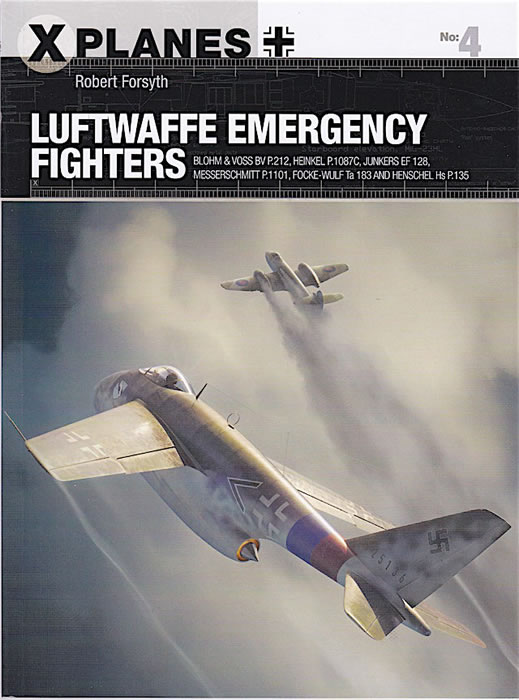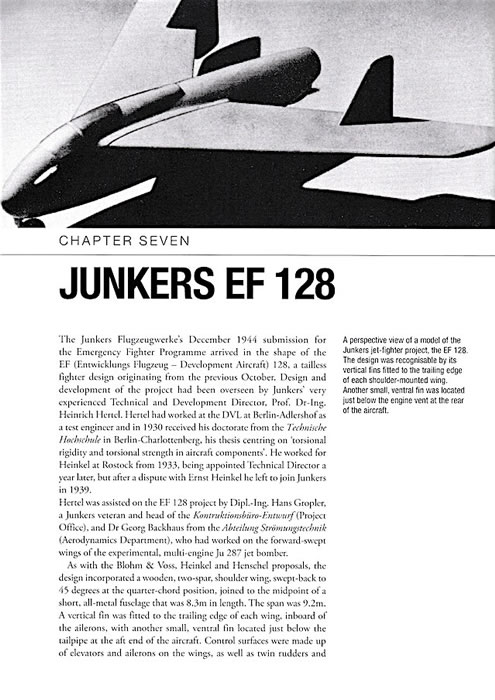X-Planes 4
Luftwaffe Emergency Fighters

Osprey Publishing
S u m m a r y : |
Title and ISBN: |
Osprey Publishing
Luftwaffe Emergency Fighters
by Robert Forsyth
ISBN: 978-1-4728-1994-9 |
Contents & Media: |
Soft-cover format; 88 pages; black and white photographs and line drawings; full-colour plates. |
Price: |
£12.99 plus postage available online from Osprey Publishing, and from specialist book and hobby shops.
Also available from Osprey as an ePub (ePub or PDF), both £10.99
• ePub (ISBN 978-1-4728-1996-3) and
• PDF (ISBN 978-1-4728-1995-6) |
Review Type: |
First Read. |
Advantages: |
Interesting subject; clearly written text supported by well-chosen illustrations. |
Disadvantages: |
|
Conclusion: |
A short but well-presented study of this interesting subject – highly recommended. |
Reviewed by Brad Fallen

HyperScale is proudly supported by Squadron
X-Planes is a comparatively new line of books from Osprey. According to Osprey’s website, the series’ intention is to explain “the technology behind the world's most important experimental and prototype aircraft, their often dangerous flight-test careers, and how their successes and failures fed into frontline development.” Four volumes have so far been released, focusing on the Bell X-1, Messerschmitt Me 264 Amerika Bomber, North American X-15, and the book I am looking at here, Luftwaffe Emergency Fighters.

With their blend of genius and desperation, Luftwaffe ‘paper projects’ have a lasting attraction for modellers and aviation enthusiasts. The strength of author Robert Forsyth’s approach is that he beds these weird and wonderful concepts in the reality of Germany’s war situation; there are no Ba 349s in desert camouflage here. Forsyth structures his thesis around the RLM’s late1944 tender for a
new-generation, jet-powered ‘emergency’ fighter/interceptor that would be capable of taking on Allied jets over Germany as well as being able to deal with the formidable B-29 Superfortress…that it was believed would replace the B-17…during 1945.
Forsyth begins with an assessment of the Luftwaffe’s erosion as a fighting force in 1944-45, and the Messerschmitt Me 262’s potential to reverse this decline. He then examines German jet engine and airframe research that promised to give the Reich even greater battlefield advantage, if it could be incorporated into a working design. This imperative led to the emergency fighter programme, and design submissions from six German aircraft manufacturers.
Forsyth devotes a chapter to each design, as follows:
- Blohm and Voss BV P.212.03
The length of these chapters varies according to the extent each project was developed, and the amount of information available on each. Forsyth devotes 14 pages to the Ta 183 and eight to the P.1101 – designs that moved well beyond paper and wind tunnel evaluation – but only three to the Hs P.135, the plans for which were submitted late and never seriously considered.
The story of each design is accompanied by full colour three view illustrations, which portray the aircraft in representative Luftwaffe camouflage and markings, and black-and-white period photos and drawings. Two what-if action pictures are also included: one on the front cover of a P.1101 flying above a wounded Gloster Meteor, and a double-page spread of Ta 183s attacking B-17s with Ruhrstahl X4 missiles in summer 1946.
The book’s final two chapters focus on the RLM’s assessment of the competing designs in early 1945 – which identified the Ta 183 and P.1101 as the only viable options – and the influence of German thinking on postwar fighter development. While some parts of this story were familiar to me, others weren’t; for example, I wasn’t aware of the restoration work that Bell did on the P.1101 V1 airframe, and the subsequent similarity of Bell’s X-5 with the German design.
Osprey’s Luftwaffe Emergency Fighters is a short but well-presented study of an interesting subject. The author writes clearly, and gives a particularly good impression of the challenges faced by German aviation designers towards the end of World War II.
Highly recommended – I’m looking forward to reading other titles in this series.
Thanks to Osprey Publishing for the sample.
Review Copyright © 2017 by Brad Fallen
This Page Created on 20 July, 2017
Last updated
20 July, 2017
Back to HyperScale Main Page
Back to Reviews Page

|
